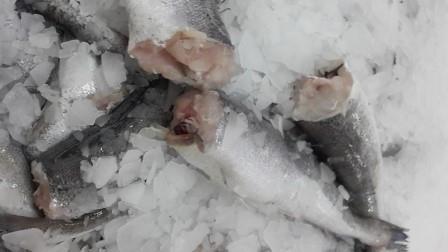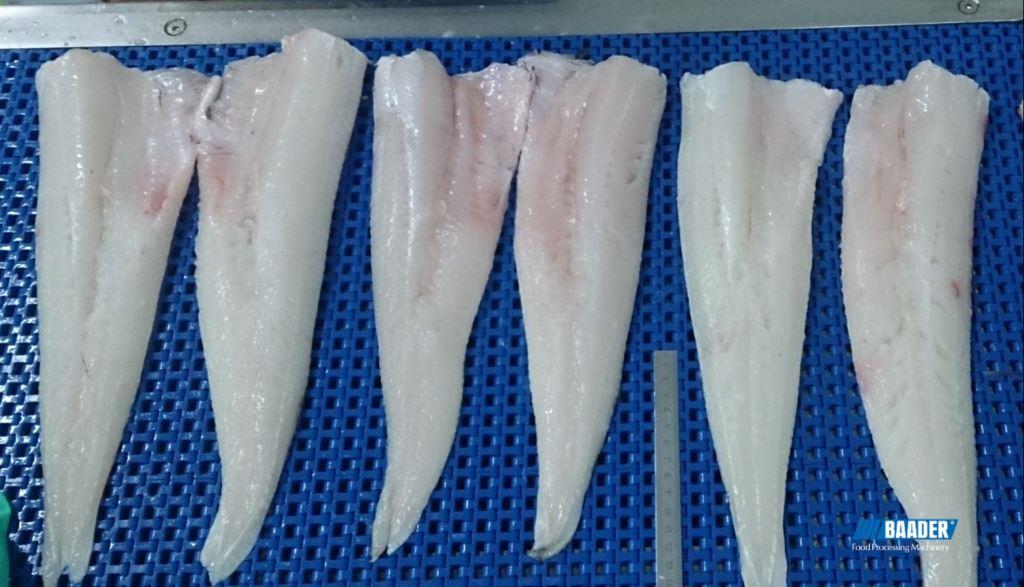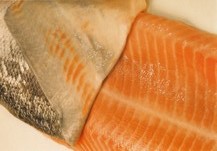|
The immense variety of fish in the world presents quite a challenge to
using machinery or tools that process these fish. To illustrate, here are
just some examples of the different shapes and bone structures of fish:
- Narrow and short e.g. flat fish, Tilapia
- Long and medium-round e.g. Hake, Alaska Pollock
- Have numerous small internal bones e.g. baracuda, Snoek
- Very large fish e.g. Tuna
It is therefore not possible to use a single machine for all the different
types of fish and all of the different sizes that are processed.
Instead, machinery has mainly been
developed for those specie of fish that are available in large quantities
that justify the cost of development and support mechanised processing.
In the case of some species e.g.
Hake & Alaska Pollock, the difference in bone structure between the smaller
and largest fish, is so big that two different models of machine have been
developed e.g. the B588 for the small to medium sizes, and the B581 for the
large fish.
Please see the product comparison
in order to see which models of machine are available for which specie
and size.
Also consider which process is required: depending on the specie of fish
and the market into which it is sold, some fish are sold whole, in a fresh
frozen or dried state - in which case the only processing required may be
sorting, gutting, cleaning and packing.
Other markets prefer prime quality (PQ) - which requires the addition process
of heading.
The most demanding markets require skinned fish fillets: this requires filleting,
skinning and
carton packing.
Certain models of machines only perform one process e.g. the
B188 only
performs filleting. Other machines perform more than one process: the
B182 performs heading and filleting.
See these various processes in the above menu under Products > By processess.
Critical to all fish processing is the hygiene maintained during processing
as well as the speed at which the fish is processed. The moment a fish dies,
it starts decaying - an important element of the decay is the multiplication
of bacteria, which especially poses a threat to human health. We impede this
decay and bacteria build-up by using refrigeration,
hygiene, and high speed
in the processing stages. In terms of speed, machines have a huge advantage
over human manual processing. Humans cannot produce the same (a) consistent
(b) yield at the (c) high speed machines can.
The faster a fish is processed, packed and frozen, the higher it's quality
and longer it's shelf life.
The methods used may also differ amongst models of machines. For example the
B052 pulls the skin off the fish meat,
whereas a FDS35 uses a band knife
in order to slice the skin off the meat. See fish skinning.
Above are some of the considerations when choosing a machine, for others please see
'how to choose a machine'.
The first company to develop a proper fish filleting machine was
Baader . To this day
Baader remains the world leader in primary fish processing. Over the decades
Baader has increased it's portfolio by acquiring other specialists in their
field like Trio (freeze drum skinning and pin bone removal),
Skaginn 3X (freezing) and AB Seac
for high volume small pilchard processing.
Goldmann Engineering specilises in bringing all of
the above skills to the fish processing industries of South Africa and
other countries of Africa.
|
Hake headed & gutted (H&G) on ice

Fillets from a B588

Illustrating the
skinning of a fillet

|